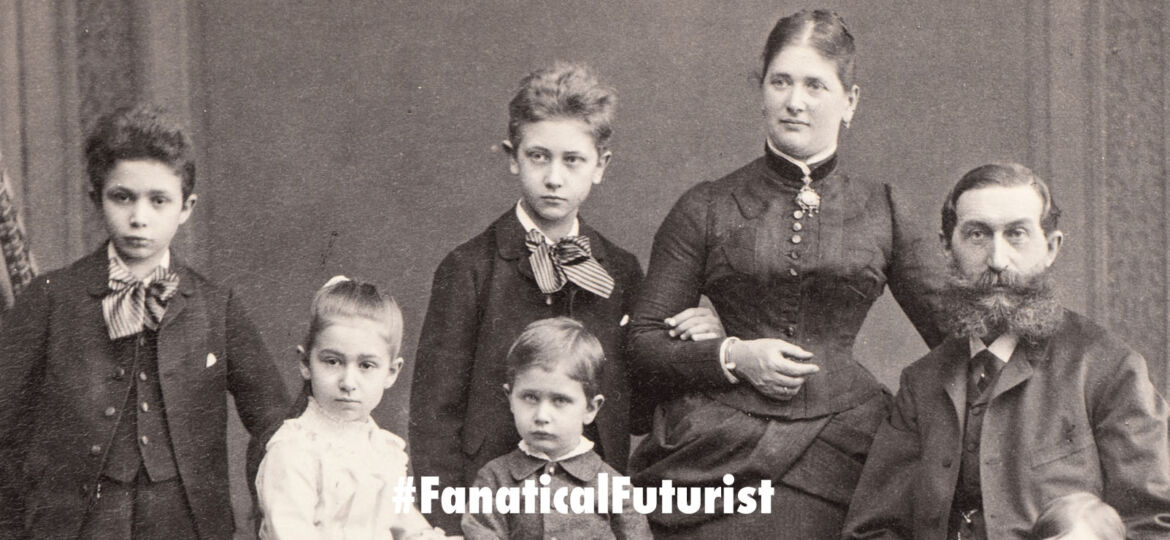
WHY THIS MATTERS IN BRIEF
Five years ago most people hadn’t heard about DeepFakes, but as they get better now companies everywhere are using them to innovate new products and do new things.
 Love the Exponential Future? Join our XPotential Community, future proof yourself with courses from XPotential University, connect, watch a keynote, or browse my blog.
Love the Exponential Future? Join our XPotential Community, future proof yourself with courses from XPotential University, connect, watch a keynote, or browse my blog.
Using DeepFake tech, which uses Artificial Intelligence (AI) to manipulate and morph a wide range of digital content, from photos and videos, to give them “new meaning” and “new life,” the genealogy site MyHeritage and their Israeli partner D-ID, have debuted a new AI tool that turns photos of your deceased relatives, which you can sharpen up using another new AI tool I discussed a while back, into unnerving life-like videos that can move and talk.
Furthermore, while these “resurrected relatives” are fairly dumb at the moment and limited in their abilities, in time innovations, from companies like Microsoft and others in the digital humans space, for example, could very well mean that one day you’ll be able to talk and interact with your dead relatives as though they were on the end of a Zoom call. And how creepy awesome is that!?
Called DeepNostalgia MyHeritage’s new tool looks like it is based on the same tech I showed off a while ago which Samsung used to turn the painting of the Mona Lisa, as well as your Facebook photo, into a living portrait that moved and looked like a video, and according to MyHeritage, their version uses several AI “drivers” to work together to animate the faces.
Abe Lincoln, back from the “dead”
“Each driver is a video consisting of a fixed sequence of movements and gestures. Deep Nostalgia can very accurately apply the drivers to a face in your still photo, creating a short video that you can share with your friends and family. The driver guides the movements in the animation so you can see your ancestors smile, blink, and turn their heads.”
While it’s tempting to upload images of deceased relatives or long-lost friends, it’s an uncomfortable proposition to digitally resurrect or reanimate a person’s face without their consent.
MyHeritage has said the DeepNostalgia tool doesn’t create speech, yet, in order to stop people from creating actionable deepfake videos. But the company has created a voice for a reanimated Abraham Lincoln which they used as a promotional video.
Here’s @Ryan BGSTL using the new tool …
However, even if MyHeritage’s new feature could create speech for the people in the photos it’s unlikely it will ever be able to replicate their personality because up until recently, with the arrival of social media, there just wasn’t enough training data that the AI can use to reproduce their behaviours, experiences, or voices.
“This feature is intended for nostalgic use, that is, to bring beloved ancestors back to life,” said MyHeritage in its FAQs about the new feature. But the company also admitted that “some people love the Deep Nostalgia feature and consider it magical, while others find it creepy and dislike it.”
“The results can be controversial, and it’s hard to stay indifferent to this technology.”
Deepfake models are computer-generated and AI-driven videos capable of simulating the animation of real people from an existing photo.
On MyHeritage’s site, historical figures like Florence Nightingale and Queen Victoria are reanimated for all to view. But people have already started posting pics of their reanimated ancestor videos on Twitter, to mixed reactions. Some said the results were “amazing” and “emotional,” but others weren’t so thrilled.
Beyond the issues of creepiness and basic ethics of creating videos of other people without their consent, there are also political issues. In December, the UK’s Channel 4 generated a deepfake Queen who gave an alternative Christmas message — as a performative warning to the public on how deepfake technology might be used to spread fake news.
However, asides from satisfying the nostalgic experience for users of this new feature, there is growing concern about the potential misuse of the technology, and as DeepFakes get easier to make and improve in quality, as well as start undermining democracy itself, that alone is likely enough to get many of our deceased relatives turning in their graves.
The future is weird, and now the future just made our past weirder too …















